Resize partition, also known as change partition size. It is amazing, nowadays, new computer technology make it is possible to resize partition without losing data. Originally, you have to backup, delete partition and create larger partitions. What a annoying and time-consuming work.
Actually, many people don't know which tool to resize partition or how to change partition size, so in this article, I'll talk about how to resize Server 2003 partition without data loss. To many Server administrators, it is not an easy task to resize partition on Server 2003, don't worry, after reading this article, you'll know how easy it is to resize Server 2003 partition within 2 steps.
Which software to resize 2003 Server partitions?
Partition Magic
Partition Magic is the first and most famous partitioning software, but since being acquired by Symantec, Partition Magic has not been upgraded. So it is not possible to extend, resize server partition under any advanced Operating System, such as Windows 2003, 2008, etc. Furthermore, it is no longer for selling.
Diskpart.exe
Diskpart.exe is a command line built in Windows 2003, which is free, but it is not recommended to resize partition on Server 2003, as it has many limitations, such as:
- Only DATA partition can be extended.
- The partition you want to extend must be formatted as NTFS.
- The unallocated space for extension must be the next contiguous space on the same disk.
- You cannot extend the partition if the system page file is located.
- Comparing with graphical user interface software, command line is hard to use for many users.
- Operations cannot be undone, incorrect operations are very likely lead to data loss.
Server 2003 partition software
With third party server partition software, there are no such limitations, you can shrink and extend any partitions as you wish.
Server 2003 resize partition tutorial
Download NIUBI Partition Editor, you'll see all connected disk and partitions. On the test server, there are 3 voumes C: D: and E:
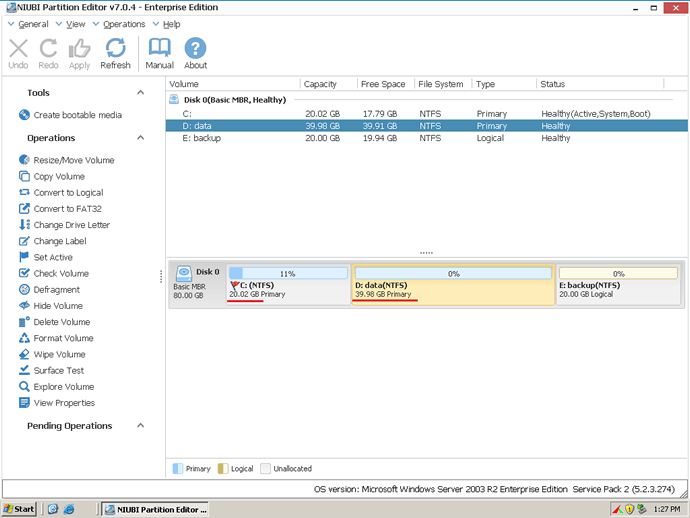
Step 1: Right click D and select Resize/Move Volume, Drag left border rightwards to shrink it in the pop-up window.
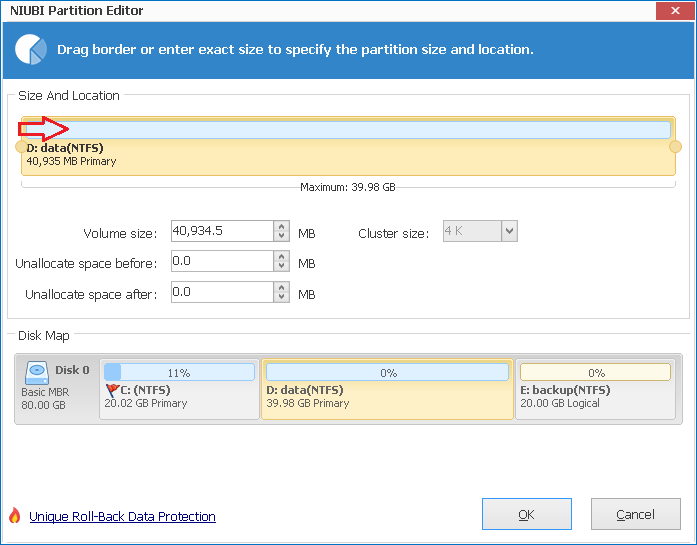
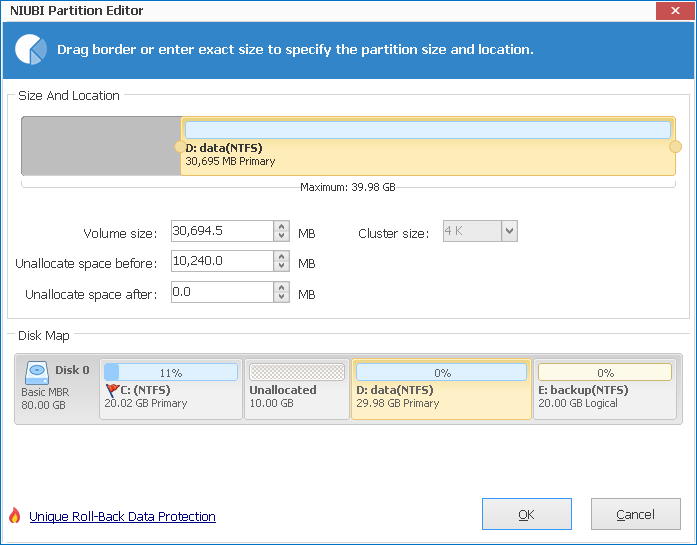
10GB Unallocated space is generated behind C drive.
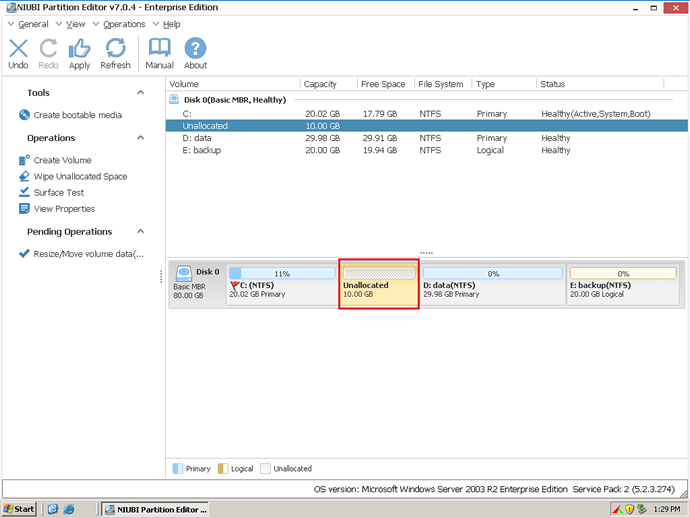
Step 2: Right-click C drive and select "Resize/Move Volume" again, in the pop-up window, drag the right border rightwards to hold the Unallocated space.
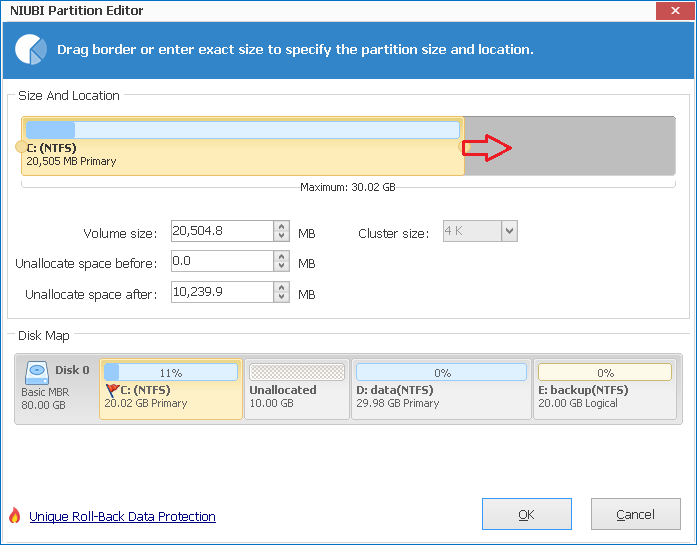
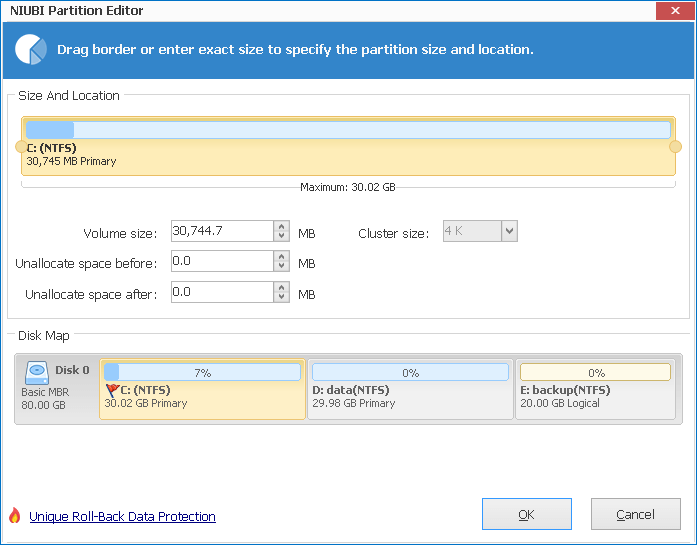
Click OK, in the main window, you'll find that system C drive has been extended to 30.02GB. Click Apply on top left to execute. (All operations before Apply work in virtual mode and you can cancel or redo any step.)
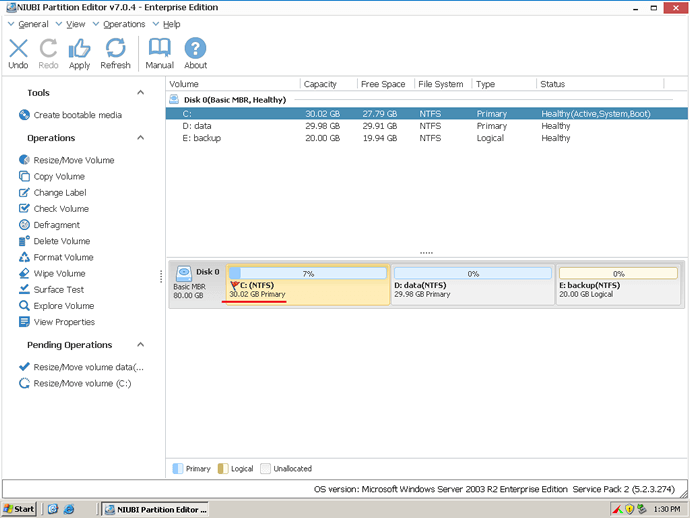
In conclusion, you just need to drag and drop on the disk map to shrink an existing data partition to get some free Unallocated space, and then extend system C: drive without doing anything else.
NIUBI Partition Editor is only program that integrated Roll-Back technology to ensure 100% data safety. It automatically roll back the server to the status before resizing in ONE second, if any software error or hardware issue such as power failure occur during resizing. So I always recommend this tool to resize Windows server partitions.
When system C drive if full or running out of space, you'd better resize partition and extend it, as low free disk space may cause system running slower, reboot or crash, and you cannot install updates or applications.
No Server partitioning software has the ablity to extend a drive by taking space from other physical hard disk.
Related Articles
- Partition Manager for Windows 2003
- Merge partitions in Server 2003
- Change Server 2003 partition size
- Increase C drive space in Windows 2003 Server
- Resize partition in Windows 2003 Server Enterprise edition
- How to resize RAID 1 partition without rebuilding?